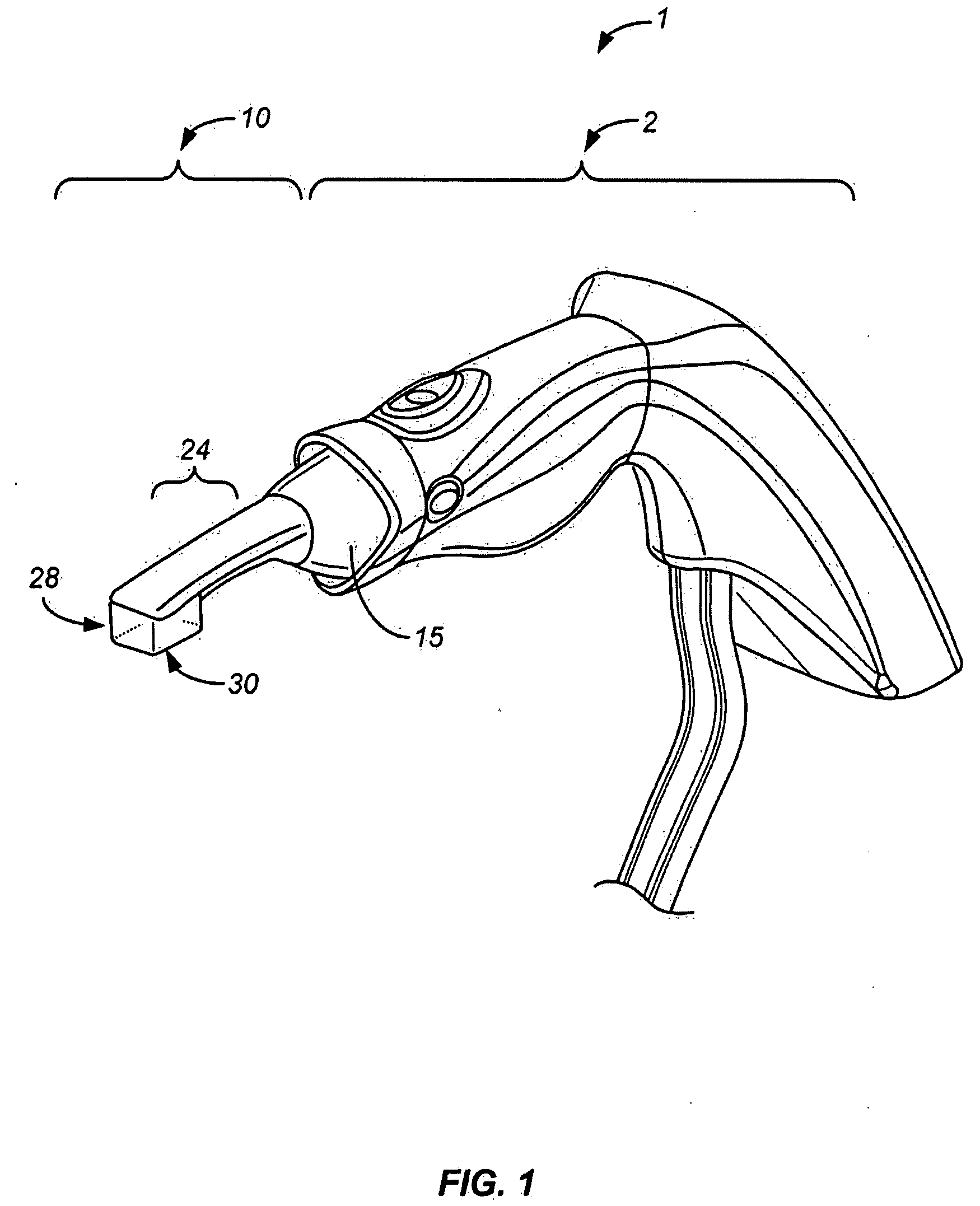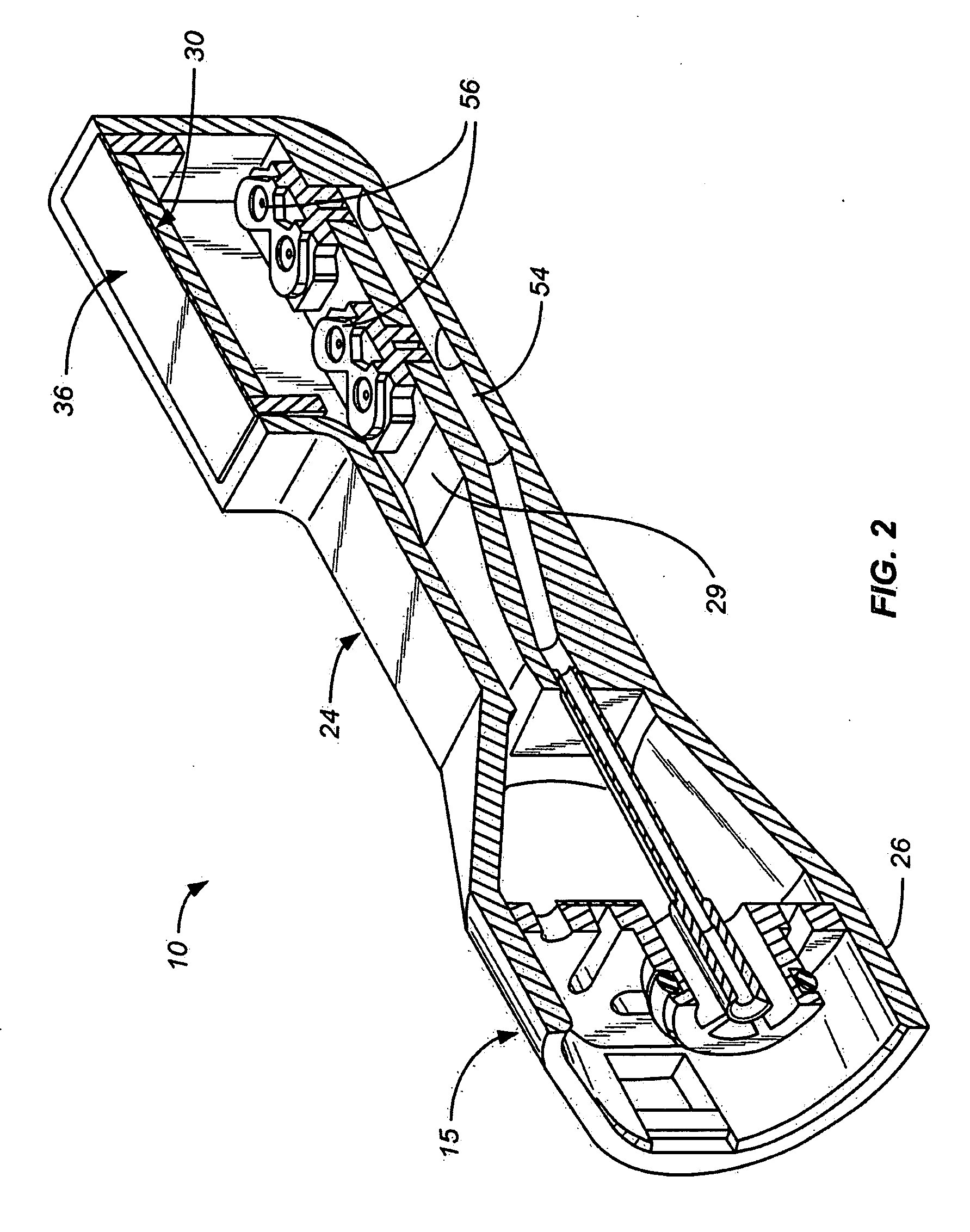Vaginal remodeling device and methods
a vaginal and vulva technology, applied in the field of vaginal remodeling devices and methods, can solve the problems of non-uniform energy delivery, poor remodeling process, risk damage to the mucosal epithelium, etc., and achieve the effect of improving the level of contact pressure, being more accurate, deliberate and visible, and improving the control of the contact pressur
- Summary
- Abstract
- Description
- Claims
- Application Information
AI Technical Summary
Benefits of technology
Problems solved by technology
Method used
Image
Examples
Embodiment Construction
Apparatus
[0031] Embodiments of the present invention include an apparatus and method for remodeling female genital tissue by applying heat to a target tissue underlying the surface mucosal epithelium, while cooling the surface epithelium itself. The apparatus and methods build on those of prior art such as those described by Knowlton, including US 2004 / 0000316, and others cited in the background, all incorporated by this reference, but include novel features in the apparatus and methods that are configured and adapted to particulars of the female genital treatment site, the mucosal epithelium contacted by the present apparatus, and the underlying target tissue that is remodeled according to aspects of the invention. FIG. 1 shows an apparatus 1, which comprises a hand piece 2 and a treatment tip 10. The hand piece 2 is adapted to be held by an operator, such as a physician, and may include connections to a larger supporting system (not shown), or, in some embodiments, it may be ope...
PUM
 Login to View More
Login to View More Abstract
Description
Claims
Application Information
 Login to View More
Login to View More - R&D
- Intellectual Property
- Life Sciences
- Materials
- Tech Scout
- Unparalleled Data Quality
- Higher Quality Content
- 60% Fewer Hallucinations
Browse by: Latest US Patents, China's latest patents, Technical Efficacy Thesaurus, Application Domain, Technology Topic, Popular Technical Reports.
© 2025 PatSnap. All rights reserved.Legal|Privacy policy|Modern Slavery Act Transparency Statement|Sitemap|About US| Contact US: help@patsnap.com



